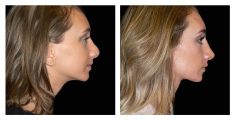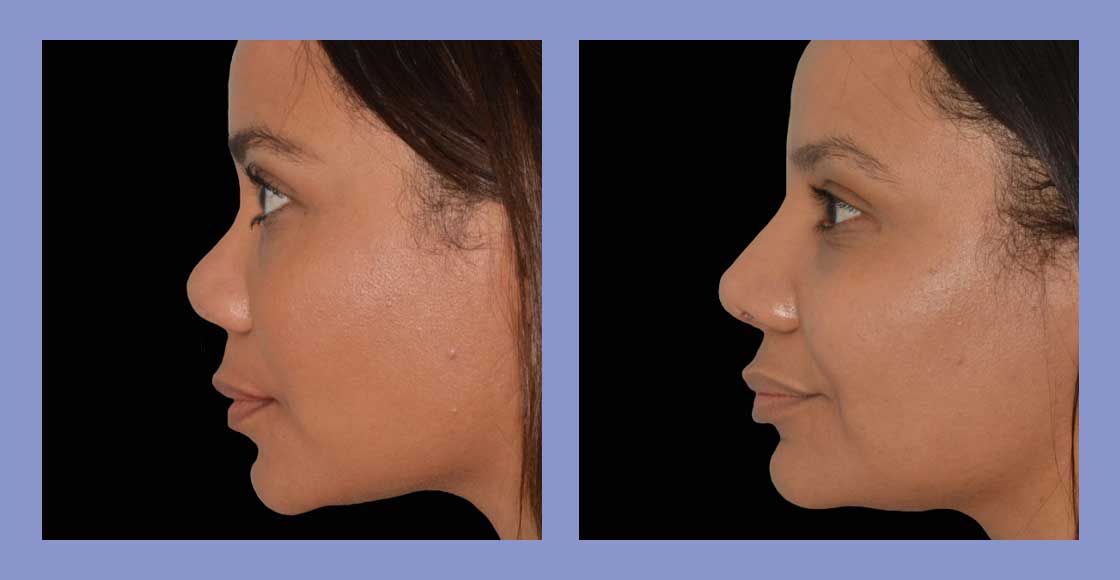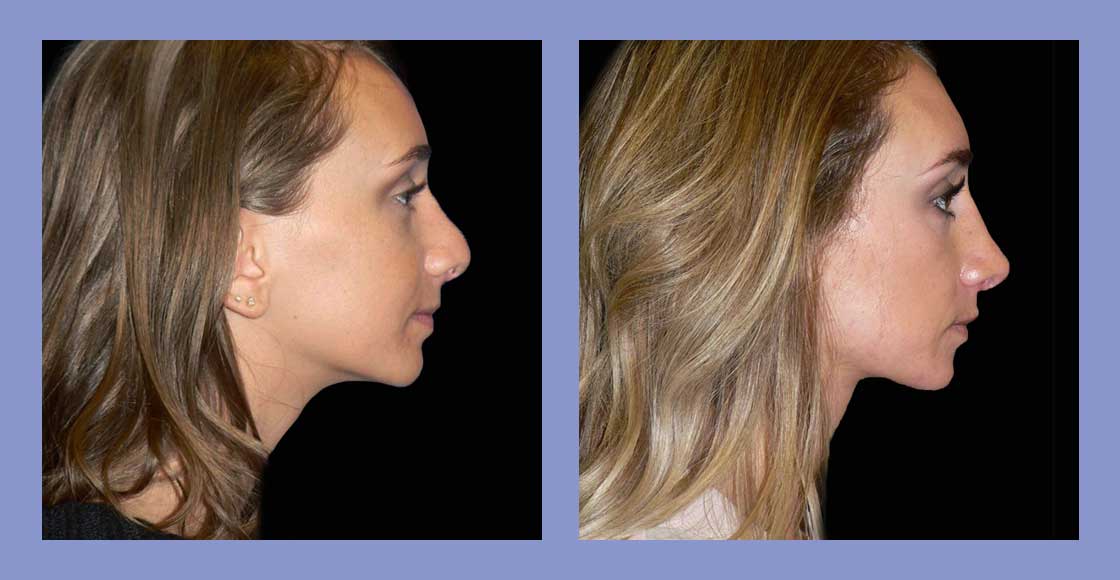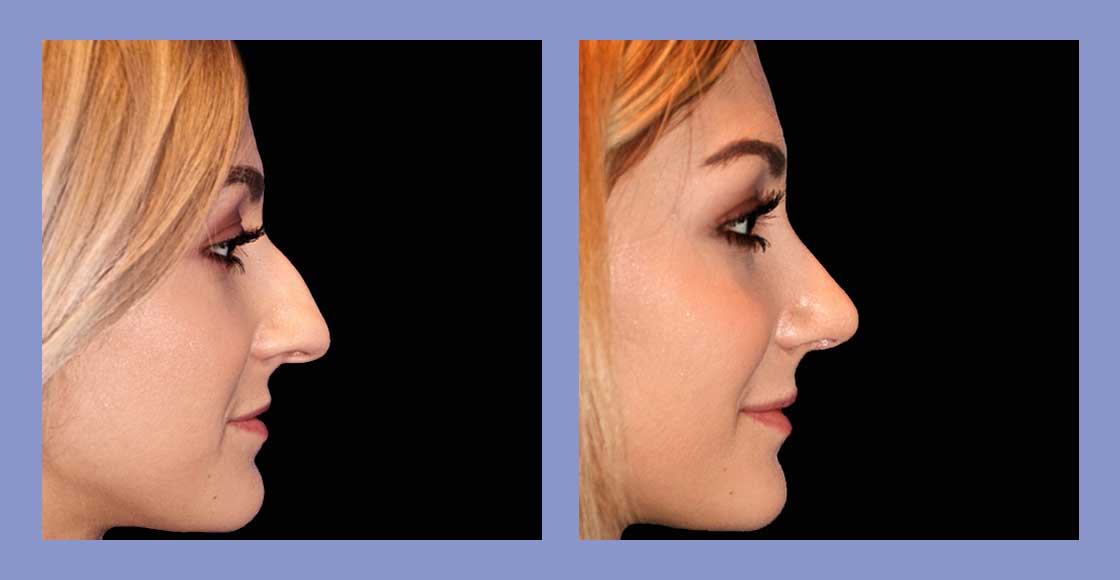— Verve Patient

Rhinoplasty
As the most noticeable element of the face, there is no way to conceal a nose that is oversized, crooked or otherwise unflattering. Improving aesthetic imperfections on the nose requires a surgical operation called rhinoplasty (nose reshaping surgery).
What Is a Rhinoplasty?
Who Is a Good Candidate?
- You may be a suitable candidate for rhinoplasty if your nose:
- Is too large or too small for your face.
- Is crooked.
- Has oversized or flared nostrils.
- Has a bump on the bridge.
- Has a droopy, upturned or bulbous tip.
- Has a deviated septum that impedes normal breathing through the nostrils.
- You should be at or close to your ideal weight, with a BMI less than 35.
- The best candidates are non-smokers. Smoking increases the chance of complications including impairment in wound healing.
The Procedures
- Rhinoplasty is generally performed on an outpatient basis at a hospital or surgery center. Anesthesia is used for your complete comfort.
- Rhinoplasty can be performed using either an open or closed approach. During open rhinoplasty, the incisions are made across the strip of skin separating the nostrils (called the columella), and the skin is separated from the underlying nasal structures. This incision approach allows for greater visual access during the procedure, but leaves only a faint and well concealed scar across the columella. During closed rhinoplasty, the incisions are limited to inside the nostrils, eliminating the chance of any visible scarring.
- Through the incisions, the internal structures of the nose are modified according to the treatment plan. This could include removing a bump on the bridge of the nose, removing cartilage to reduce the size of the nose or refining the nasal tip. A deviated septum can also be corrected to enable proper breathing function through the nostrils.
The Incisions
Incisions are made across the strip of skin separating the nostrils (called the columella), and the skin is separated from the underlying nasal structures.
Procedure Video
[Title screen for Procedure – Rhinoplasty]
[Dr. Gupta speaking to the camera like an interview]
When I see a Rhinoplasty patient, the most common complaints include slight deviation of the nose,
[Images showing examples of Rhinoplasty patients]
a hump in the center of the nose, or a white tip.
[Dr. Gupta speaking to the camera like an interview]
But we also see patients who have breathing problems because their septum may be deviated or the internal passage is a little bit narrow.
[Dr. Gupta in the operating room performing a Rhinoplasty procedure]
One good thing with the rhinoplasties is both of the corrections can be performed at the same time. We can improve the breathing as well as the appearance of the nose.
[Dr. Gupta speaking to the camera like an interview]
At Verve plastic surgery, we perform the breathing corrections under insurance actually. So when we combine the two procedures, some of your costs are covered by insurance.
[Before and after photos of Rhinoplasty patients]
[Dr. Gupta speaking to the camera like an interview]
I love rhinoplasty surgeries. I love the finesse in this surgery
[Patient looking at herself in the mirror]
and it helps patients tremendously. Typically, patients have been thinking about it for a long time and once their concerns are addressed,
[Dr. Gupta speaking to the camera like an interview]
we see a tremendous improvement in self-confidence and overall happiness with their appearance.
[Closing title screen with Verve Plastic Surgery logo]
[On-screen text: Call today (760) 436-7600]
FAQs
- You will see improvement immediately after your rhinoplasty; however, it can take up to a year for all of the swelling to be completely resolved.
- Your nasal function will remain the same or even improved depending on the procedure performed. Often patients present with impaired breathing and internal repair can be performed to improve breathing while improving the external appearance as well.
A “closed” rhinoplasty refers to limiting the incision to within the nostril. While this does avoid a visible scar, it is much more difficult and at sometimes impossible to perform the appropriate surgical maneuvers to correct many patient complaints.
An “open” rhinoplasty involves an incision that connects the nostrils across the columella. This allows for complete visualization of all the nasal structural components and allows for complete repair and recontouring of the nose.
- Improvement in the cosmetic appearance of the nose will not be covered by insurance. Some policies will cover the portion of the surgery which improves breathing and the repair of the internal nasal structure. Each policy is different, and this is not always a covered benefit.
Request an Appointment
Call (760) 436-7600 or fill out the form to schedule an appointment to discuss your needs in detail


